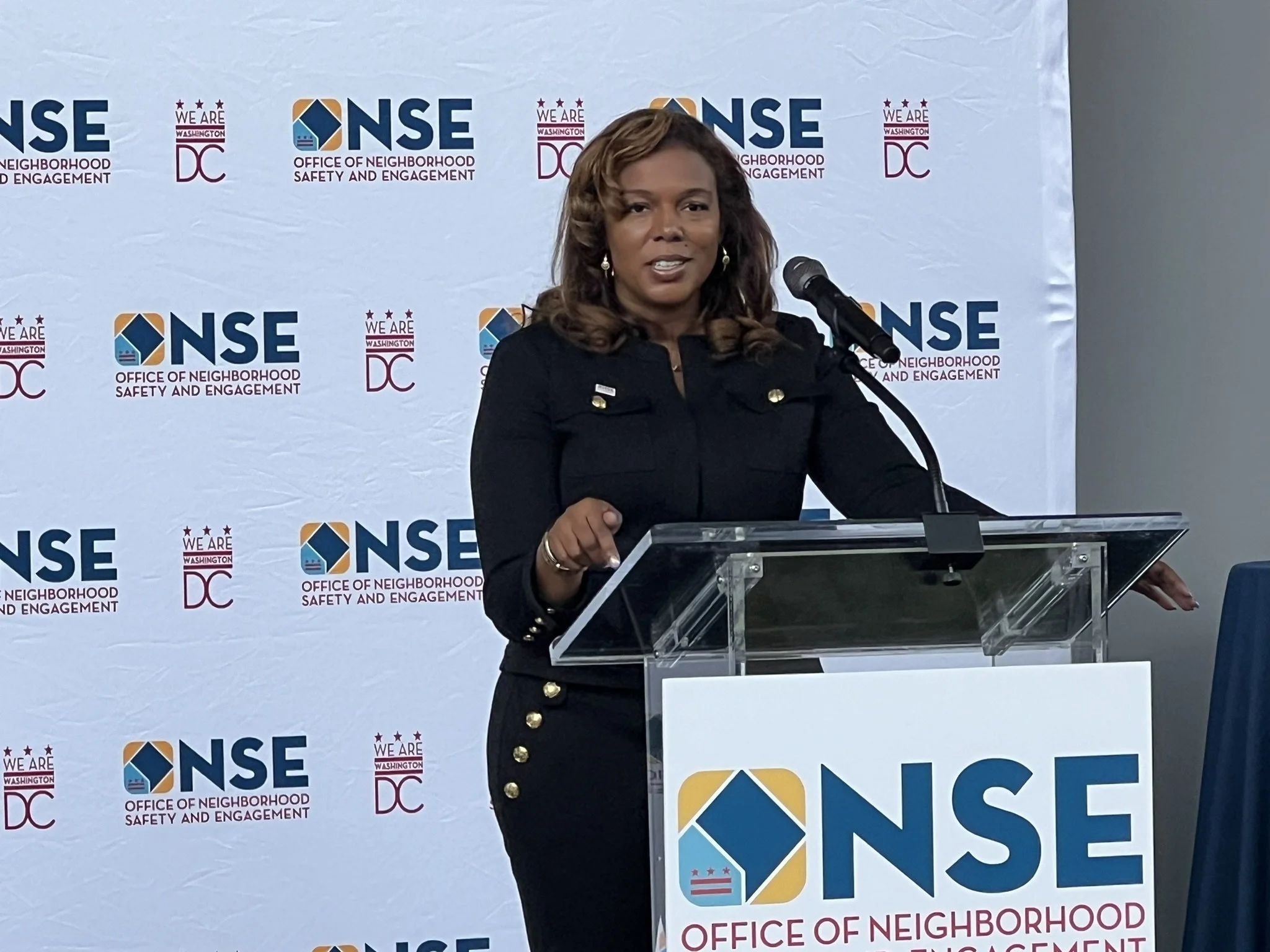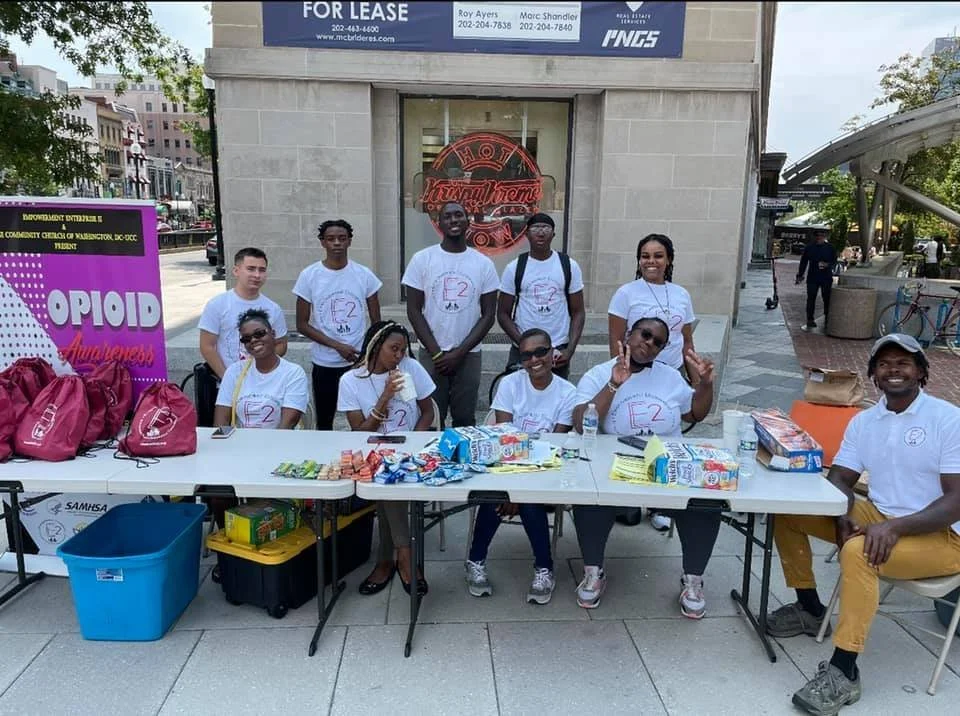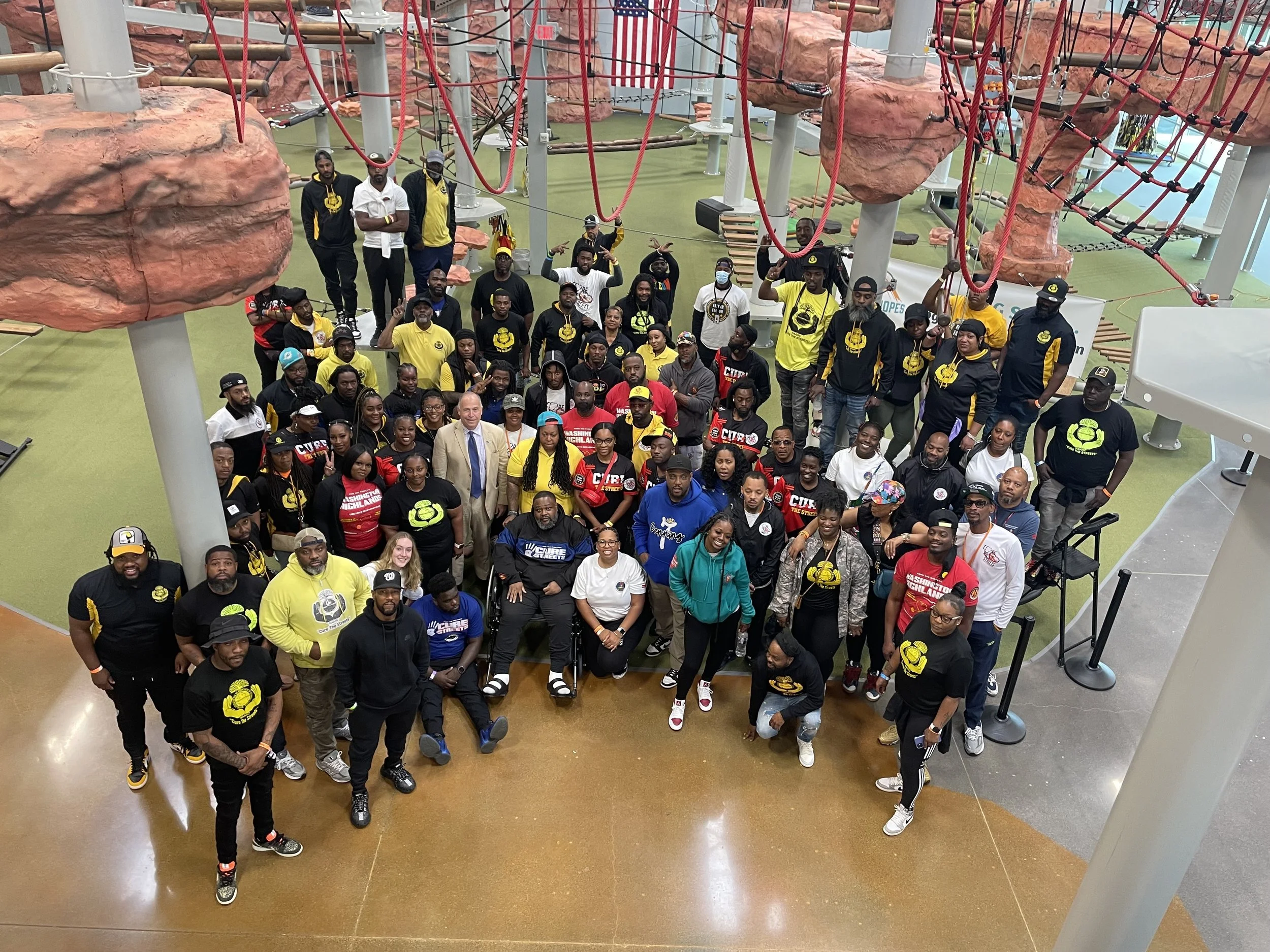Gun Violence Awareness Month: A Conversation with the Women Leading the Work
Kelli D. Sneed, Executive Director of the DC Office of Neighborhood Safety & Engagement (ONSE)
Gabrielle Stevens, Director of Grants Management & Community-Based Programs with the DC Office of the Attorney General.
Washington, DC currently has two Community Violence Intervention (CVI) initiatives run by city agencies. Cure the Streets through the Office of the Attorney General (OAG) has been operating since 2018 and the Violence Intervention initiative operated by the Office of Neighborhood Safety and Engagement or ONSE (in operation since 2017).
Currently, two Black women leaders oversee the city’s CVI efforts- Kwelli D Sneed, Executive Director of DC’s Office for Neighborhood Safety & Engagement (ONSE) and Gabrielle Stevens, Director, Grants Management and Community-Based Programs with the DC Office of the Attorney General (OAG).
Below, we learn more about these two leaders and the city-led (but community-based) efforts to curb violence.
Talk a little bit about the work that you lead here in DC.
KDS: As a native Washingtonian, my commitment to the well-being of the District is deeply personal. Growing up here, I’ve seen both the challenges our communities face and the tremendous resilience within them. That perspective fuels my devotion to making a meaningful impact through my work.
Throughout my career across various roles in DC government, I’ve had the opportunity to develop a comprehensive understanding of how our government systems operate— and more importantly, how to navigate those systems to ensure residents are truly served.
As the Director of ONSE I get to continue to do this as I lead our agency toward our mission of reducing gun-related violence in every ward across the District
GS: In my role as Director, one of my chief responsibilities is managing OAG’s Violence Reduction Unit and flagship community violence interruption program, Cure the Streets (CTS). The CTS program is built on the belief, supported by research, that empowering communities to intervene with those at highest risk of gun violence and changing the social norms surrounding it can have significant, lasting impacts.
Over the last seven years, we have seen transformation in the program staff, participants, and communities that we serve. The CTS program has been successful in reducing gun violence in key neighborhoods across the District. More information about the program and our impact can be found on our website.
When you think about your partners in the community that work on the frontlines to interrupt and intervene in violence- what do you want residents of DC to know about them.
KDS: When I think about our partners in the community who are on the frontlines interrupting and intervening in violence, I want DC residents to know that these are not just workers—they are neighbors, mentors, healers, and protectors. Many of them have lived the very experiences they now work every day to prevent. They bring credibility, compassion, and a deep commitment to the people and communities they serve.
These individuals put their lives on the line—day and night—responding to shootings, mediating conflicts, supporting families in crisis, and helping people find a different path. They do this work quietly, often without recognition, but the impact is profound. Their presence helps prevent retaliation, ease community tensions, and connect people to critical resources like housing, employment, and trauma support.
What people often miss about community violence intervention (CVI) in DC is that it’s not just about responding to violence—it’s about preventing it through trust, relationships, and consistency. CVI isn’t a quick fix. It’s a long-term investment in people, communities, and healing. When paired with housing, jobs, and mental health support.
GS: I have met some of the most dedicated, passionate, and inspiring partners in doing this work. Our frontline staff work tirelessly to address gun violence. The program employs credible individuals who have trusted relationships and influence within their neighborhoods. CTS staff on the frontlines are trained to mediate conflicts, provide resources and support to high-risk participants, and engage with the community to build coalitions and develop strategies to reduce gun violence.
The community-based organizations (CBOs) that we work with also play a huge role in the success of the program. They understand that community violence interruption saves lives and addresses the root causes of gun violence. Our CBOs employ more than 90 CTS frontline staff and work in partnership with OAG to ensure the program is implemented with fidelity to the model.
There would be no CTS without our partners, and a large part of the program’s success is attributed to the CBOs and frontline staff.
Women in CVI are a powerful force both here in DC and across the country- talk a bit about how you've tapped into that network of women leaders both locally and nationally (particularly in a field where men have at the forefront historically)
KDS: Women have always been at the forefront of community building, saving, and sustaining. I come from women who have always stepped up to serve and I am thankful to work alongside the women across ONSE, our grantees, and CVI to bring about a world without gun violence. I was fortunate to participate in the Community Violence Intervention Leadership Academy at the University of Chicago where I connected with so many women doing this work on the national level. I look forward to ONSE continuing to be a convener for partners across backgrounds.
GS: I appreciate this question and recognize that women have always been pioneers as it relates to community-led programs and initiatives. I am grateful to have found support in many women through my journey of leading CTS over the last three years. Women have played a huge role in my success, and it helps to have government, non-profit, and federal partners that not only support the work that I do but also support me. In turn, I have worked to create a safe space for other women who are leading CVI work, including my OAG team and CTS staff.
What is one thing that you think people need to know about CVI in DC that is often overlooked or misunderstood?
KDS: The data is clear: community-based violence intervention efforts work—we see this nationally and right here in DC. Violence Intervention isn’t a quick fix but a long- term investment to resocialize individuals and communities— into choosing alternative pathways to violence.
GS: Community violence interruption initiatives are a crucial component of a comprehensive approach to gun violence in the District. CVI is designed to address localized conflicts and require sustained commitment and time to make long-lasting change. I feel like people look to CVI to be an immediate solution to long-standing conflicts and then fault the efforts and programs as not working when there is continued conflict. People don’t see all the work that happens behind the scenes between program staff and community. Often people are only using one metric to measure CVI work, when there are many ways to measure the success of CVI.
DC has made major strides in reducing violence over the last year. How do you envision these declines continuing?
KDS: In 2024 we saw a substantial reduction in gun violence by thirty-seven (37%) and will continue to work hand-in hand with public and private sectors to build on this. With the support of the mayor, we hope to be able to continue to innovate, scale, and further institutionalize these efforts.
GS: With continued support, I envision violence continuing to reduce through programs like CTS. CTS staff have worked to build deep connections in the neighborhoods they serve, act as role models to program participants, and change community norms about violence.
Finally- what do you see as philanthropy's role in CVI here in DC?
KDS: It takes all of us in the fight—gun violence is public health crisis and like any other crisis every sector must be hands in. CVI is a shared responsibility. Philanthropy can be a catalyst for change, working in partnership with communities and government to build a safer DC.
GS: Philanthropy can use its convening and funding power to support CVI in the District. CVI is under attack, and it will take more than government to continue to advocate and support this work. Philanthropy should also work to shift the narrative, locally and nationally, about the need to support CVI work.







